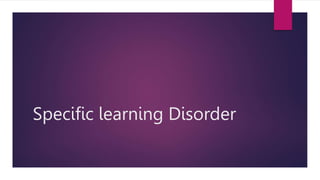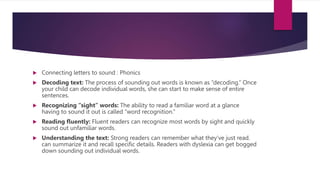Specific learning disorder, an umbrella term for difficulties in learning and using academic skills such as reading, writing, and mathematics, is characterized by a significant discrepancy between an individual's academic abilities and what is expected for their age. Diagnostic criteria include persistent difficulties despite adequate instruction and are not attributable to other factors like intellectual disabilities or visual/auditory impairments. Dyslexia and dyscalculia are common types of specific learning disorders, each impacting different aspects of learning, and early intervention strategies can help address these challenges.
































